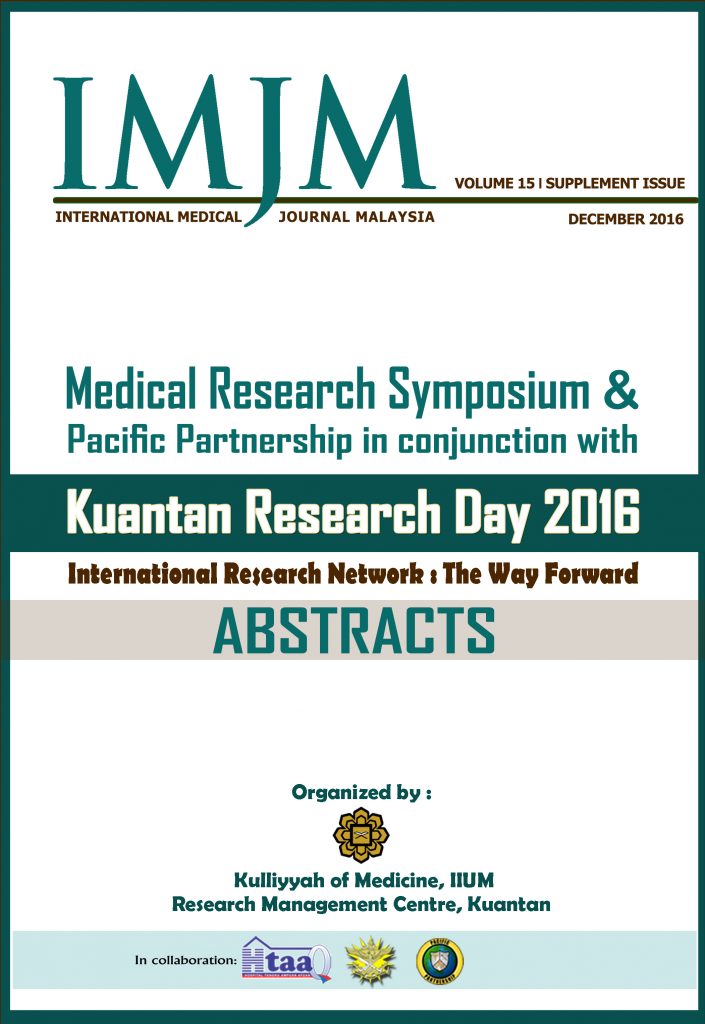Distribution of Hepatitis C virus genotypes among chronic Hepatitis C patients in Kuantan Pahang
DOI:
https://doi.org/10.31436/imjm.v15i1.1213Abstract
Introduction: Hepatitis C virus (HCV) has been classified into seven genotypes with more than 80 subtypes isolated worldwide. HCV genotypes are an important parameter in determining the right antiviral dosage, duration and monitoring the response of that treatment. The main aim of this study was to determine the distribution of HCV genotypes, their association with demographic variables and to investigate the presence of uncommon mixed-genotype infection case. Methods: This cross sectional study was performed in Hospital Tengku Ampuan Afzan, Kuantan, Pahang from January to July 2014. The sera samples from 40 HCV seropositive patients were analyzed using reversetranscription PCR (RT-PCR) and direct DNA sequencing assays. Results: More than half of study patients were from male patients (32/40; 80%), below the age of 45 (27/40; 67.5%) and Malays (34/40; 77.5%). Thirty one out 40 (77.5%) samples were successfully sequenced for genotyping with genotype 3 (24/31; 77.4%) predominate the study, followed by genotype 1 (6/31; 19.3%). There is no significant association established between the demographic factors and HCV genotypes. Majority of the HCV RNA positive samples were identified as mono genotype HCV infection. There was one isolate with mixed-genotype infection. Conclusions: The findings of the study showed that genotype 3 and 1 are still the commonest genotypes found among the study population. No association can be established from HCV genotypes and basic demographic factors. The finding of mixed HCV genotype infection from this study requires further investigation to evaluate the clinical role of this type of infection in treatment outcome.
Downloads
Downloads
Published
How to Cite
Issue
Section
License
All material submitted for publication is assumed to be submitted exclusively to the IIUM Medical Journal Malaysia (IMJM) unless the contrary is stated. Manuscript decisions are based on a double-blinded peer review process. The Editor retains the right to determine the style and if necessary, edit and shorten any material accepted for publication.
IMJM retain copyright to all the articles published in the journal. All final ‘proof’ submissions must be accompanied by a completed Copyright Assignment Form, duly signed by all authors. The author(s) or copyright owner(s) irrevocably grant(s) to any third party, in advance and in perpetuity, the right to use, reproduce or disseminate the research article in its entirety or in part, in any format or medium, provided that no substantive errors are introduced in the process, proper attribution of authorship and correct citation details are given, and that the bibliographic details are not changed. If the article is reproduced or disseminated in part, this must be clearly and unequivocally indicated.










